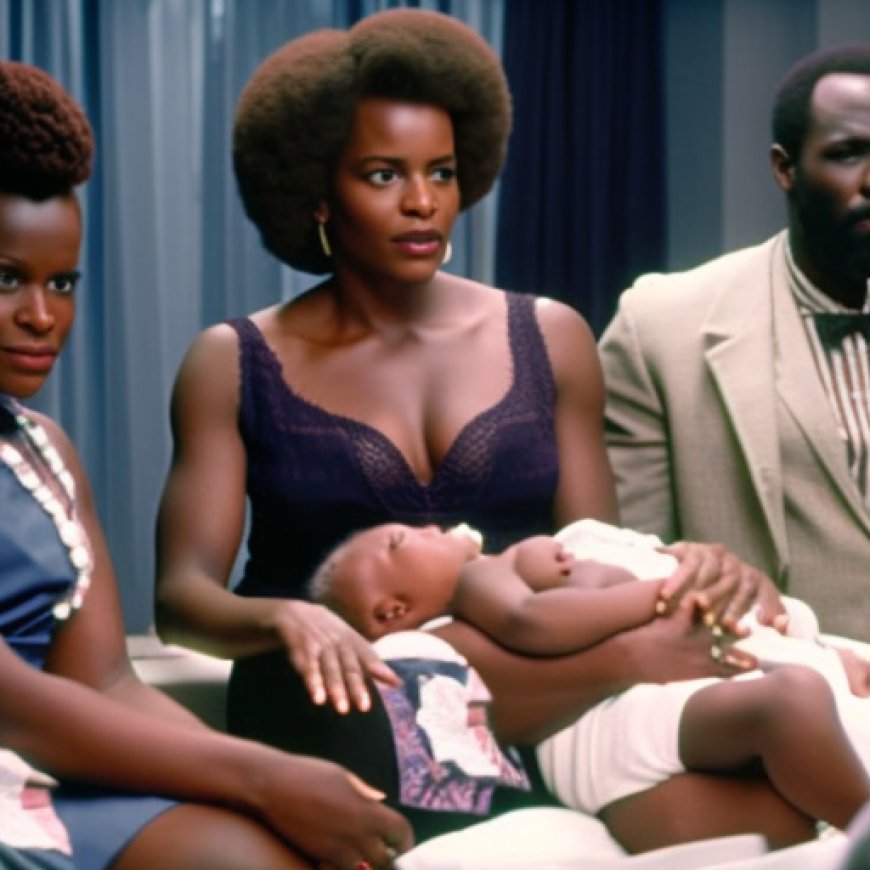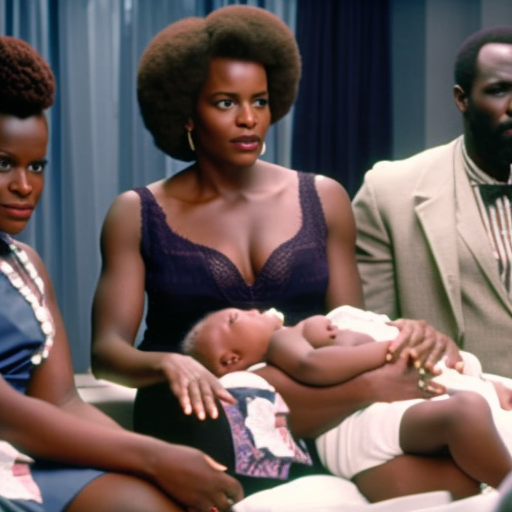SADC civil society intensifies efforts to review abortion care legislation
SADC civil society intensifies efforts to review abortion care legislation Down To Earth Magazine


Policy Barriers in Southern Africa Hindering Safe Abortions and Women’s Health
Civil society organizations (CSOs) in the Southern African Development Community (SADC) region are working together to address policy barriers and improve abortion care legislation. This collaborative effort aims to protect the millions of women who undergo unsafe abortions each year, as estimated by the World Health Organization (WHO).
The ‘My Choice, Our Choice’ Campaign
The Southern Africa AIDS Dissemination Service (SAfAIDS) is leading the SADC-wide ‘My Choice, Our Choice’ campaign, advocating for legislation that enables safe abortion. SAfAIDS is a center of excellence focused on promoting effective and ethical development responses for sexual and reproductive health and rights, HIV prevention, and tuberculosis.
CSOs involved in the campaign include Genderlinks through the Southern Africa Gender Protocol Alliance, Women’s Action Group in Zimbabwe, and Safe Abortion Alliance of Southern Africa.
Progress in Legislation and Consultations
Madagascar has tabled a bill on abortion issues, and ongoing consultations are taking place in Namibia. Lynette Mudekunye, an independent public health expert, highlighted these developments during a presentation based on the 2022 Voice and Choice Barometer commissioned by Genderlinks under the Southern Africa Gender Protocol Alliance.
Mobilization efforts are also underway in Malawi, Lesotho, Eswatini, Botswana, and other countries in the SADC region. These efforts aim to address abortion care issues despite opposition from well-funded global anti-abortion actors.
Key Findings on Abortion Legislation
The ‘Voice and Choice 2019 Barometer,’ launched by gender activists from across southern Africa, revealed important findings. Only South Africa and Mozambique have legislation allowing abortion on demand in the first trimester. However, abortion is available under certain circumstances in all SADC countries, with varying degrees of restriction.
The report also highlighted that only six SADC countries have stand-alone policies or strategies for adolescent sexual and reproductive health and rights. Additionally, only five countries do not require parental consent for adolescents to access sexual and reproductive health services.
Call for Decriminalization
The African Commission on Human and People’s Rights (ACHPR) launched a campaign for the decriminalization of abortion in 2016. This campaign emphasizes the importance of girls’ and women’s rights and wellbeing. Global frameworks, such as the WHO 2022 abortion care guidelines and the International Federation for Gynaecology and Obstetrics’ statement, also call for decriminalization to ensure safe abortions.
Decriminalization involves removing abortion from penal/criminal laws, refraining from applying other criminal offenses to abortion, and eliminating criminal penalties for all relevant actors involved in providing or seeking abortion.
WHO Guidelines on Abortion Care
In 2022, the WHO released new guidelines on abortion care to protect the health of women and girls worldwide. These guidelines, based on scientific evidence, provide recommendations for clinical practice, health service delivery, and legal and policy interventions. When followed, these guidelines ensure that abortion is a safe and simple health intervention.
Recent media reports also highlight France as the first country to explicitly include the right to abortion in its constitution. The country’s parliament voted to revise the constitution, guaranteeing women’s freedom to abort.
Conclusion
Removing policy barriers and improving abortion care legislation is crucial for ensuring safe abortions and promoting women’s health in southern Africa. These efforts align with the Sustainable Development Goals (SDGs) and contribute to achieving Goal 3: Good Health and Well-being.
SDGs, Targets, and Indicators in the Article
-
SDG 3: Good Health and Well-being
- Target 3.7: By 2030, ensure universal access to sexual and reproductive health-care services, including for family planning, information and education, and the integration of reproductive health into national strategies and programs.
- Indicator: Availability and accessibility of safe abortion services and reproductive health care in the SADC region.
-
SDG 5: Gender Equality
- Target 5.6: Ensure universal access to sexual and reproductive health and reproductive rights as agreed in accordance with the Program of Action of the International Conference on Population and Development and the Beijing Platform for Action and the outcome documents of their review conferences.
- Indicator: Existence of legislation enabling safe abortion and adolescent sexual and reproductive health and rights policies or strategies in SADC countries.
-
SDG 10: Reduced Inequalities
- Target 10.3: Ensure equal opportunity and reduce inequalities of outcome, including by eliminating discriminatory laws, policies, and practices and promoting appropriate legislation, policies, and action in this regard.
- Indicator: Existence of legislation decriminalizing abortion and ensuring no criminal penalties for relevant actors involved in abortion care.
Table: SDGs, Targets, and Indicators
| SDGs | Targets | Indicators |
|---|---|---|
| SDG 3: Good Health and Well-being | Target 3.7: By 2030, ensure universal access to sexual and reproductive health-care services, including for family planning, information and education, and the integration of reproductive health into national strategies and programs. | Availability and accessibility of safe abortion services and reproductive health care in the SADC region. |
| SDG 5: Gender Equality | Target 5.6: Ensure universal access to sexual and reproductive health and reproductive rights as agreed in accordance with the Program of Action of the International Conference on Population and Development and the Beijing Platform for Action and the outcome documents of their review conferences. | Existence of legislation enabling safe abortion and adolescent sexual and reproductive health and rights policies or strategies in SADC countries. |
| SDG 10: Reduced Inequalities | Target 10.3: Ensure equal opportunity and reduce inequalities of outcome, including by eliminating discriminatory laws, policies, and practices and promoting appropriate legislation, policies, and action in this regard. | Existence of legislation decriminalizing abortion and ensuring no criminal penalties for relevant actors involved in abortion care. |
Analysis
The article highlights the need to remove policy barriers in southern Africa to address unsafe abortions and improve women’s health. Based on the content of the article, the following SDGs, targets, and indicators can be identified:
SDG 3: Good Health and Well-being
This SDG is connected to the issues discussed in the article as it focuses on ensuring universal access to sexual and reproductive health-care services. Target 3.7 specifically mentions the need for access to safe abortion services and reproductive health care. The indicator for this target would be the availability and accessibility of these services in the SADC region.
SDG 5: Gender Equality
This SDG is relevant to the article as it emphasizes the importance of universal access to sexual and reproductive health and reproductive rights. Target 5.6 specifically mentions the need for such access, as agreed in international agreements. The indicator for this target would be the existence of legislation enabling safe abortion and adolescent sexual and reproductive health and rights policies or strategies in SADC countries.
SDG 10: Reduced Inequalities
This SDG is connected to the issues discussed in the article as it aims to reduce inequalities, including through eliminating discriminatory laws and promoting appropriate legislation. Target 10.3 specifically mentions the need to eliminate discriminatory laws, policies, and practices. The indicator for this target would be the existence of legislation decriminalizing abortion and ensuring no criminal penalties for relevant actors involved in abortion care.
Overall, the article highlights the need for policy changes and collaborative efforts to address unsafe abortions and improve women’s health in the SADC region. The identified SDGs, targets, and indicators provide a framework for measuring progress towards these goals.
Behold! This splendid article springs forth from the wellspring of knowledge, shaped by a wondrous proprietary AI technology that delved into a vast ocean of data, illuminating the path towards the Sustainable Development Goals. Remember that all rights are reserved by SDG Investors LLC, empowering us to champion progress together.
Source: downtoearth.org.in

Join us, as fellow seekers of change, on a transformative journey at https://sdgtalks.ai/welcome, where you can become a member and actively contribute to shaping a brighter future.







